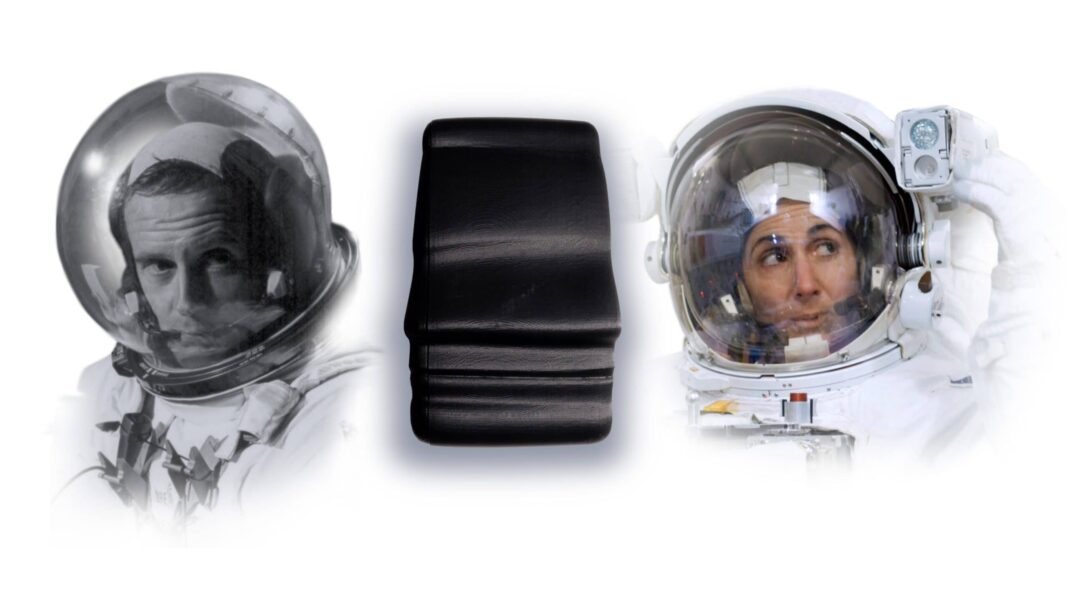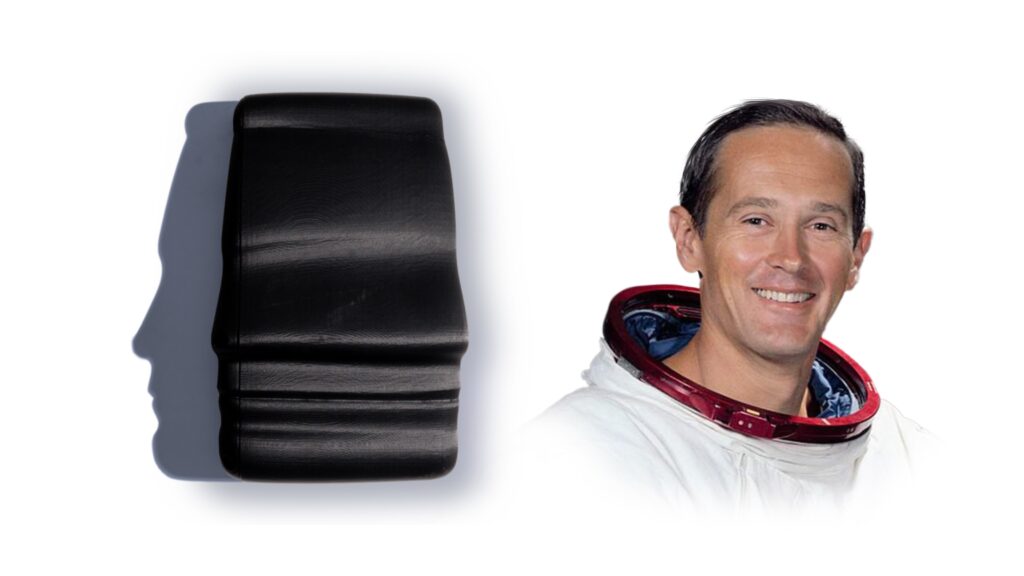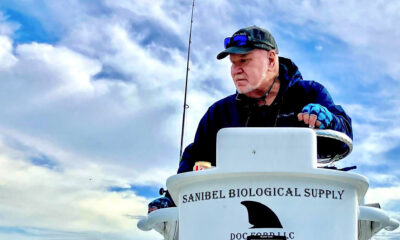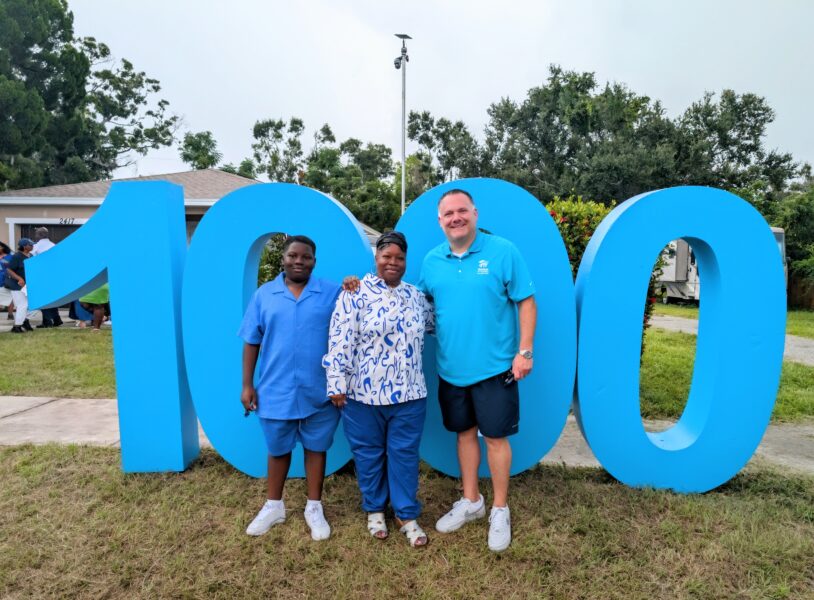St. Pete lunar startup unveils groundbreaking payload

St. Petersburg-based Lonestar Data Holdings’ leadership decided to think outside the box, literally and figuratively, when preparing for a second mission to the Moon.
The company’s Freedom payload represents the unprecedented intersection of space and architectural innovation. Lonestar partnered with Denmark-based Bjarke Ingels Group to design what will become the first lunar data center in history later this year.
Chris Stott, founder and CEO of Lonestar, said organizations typically send box-like structures into the vacuum of space as there is no need for aerodynamics. However, the two groups wanted to create something “slightly outside of the norm” that encompasses the mission’s significance – protecting the world’s information.
“We believe in inspiring people,” Stott said. “And doing something different so people will look at the first-ever data center on the Moon and stop and think about how important their data is.”

Lonestar CEO Chris Stott (left) speaks with former NASA engineer Jay F. Honeycutt at the Dec. 15, 2023, opening of mission control inside the Maritime and Defense Technology Hub. Photo by Mark Parker.
Bjarke Ingels Group (BIG) utilized advanced 3D printing technology to create a structure capable of withstanding the Moon’s harsh conditions. Stott said the renowned architectural firm is “creating a future I want to live in” by designing “beautiful” and environmentally sustainable buildings on Earth.
Lonestar’s first payload, Independence, launched in February aboard Intuitive Machines’ innovative lunar lander, Odysseus. It became the first American spacecraft to land on the Moon since NASA’s Apollo 17 mission in December 1972.
The organization, Intuitive Machines and other private companies are collaborating to establish a long-term lunar presence through the upcoming Artemis program. Stott noted that in Greek mythology, Artemis is Apollo’s twin sister.
In addition, he said the data center will represent “all of humanity – man and woman.” That concept became the basis for BIG’s design.
The firm’s architects suggested creating a data center that casts a silhouette of a man’s face in the lunar morning and a woman in the afternoon. “They came up with all these really funky designs, and we said, ‘That is gorgeous,'” Stott explained.
“It was a lot of testing, especially on the thermal stuff,” he added. “But we got it working.”

Charles Duke was one of the first to walk on the moon as part of NASA’s Apollo 16 mission.
Lonestar chose Apollo 16 moonwalker Charles Duke as the first silhouette to represent that program’s achievements. Stott said Duke, an advisory board member, thought it was a “great idea.”
The shadow will then transition to that of Stott’s wife, Nicole, a retired spacewalker who spent 104 days aboard the International Space Station. Nicole now works to foster art and space education among children and represents the Artemis program’s focus on inclusivity.
Stott called the endeavor surreal. He also noted that the unveiling coincided with Salvador Dali’s 120th birthday. Lonestar operates from the Maritime and Defense Technology Hub, about a half-mile from the local museum dedicated to the surrealist artist.
“I tell you what, though, I had to make sure I got it completely correct,” Stott said of using his wife’s silhouette. “This will last for 1,000 years on the moon.”

The Freedom payload will also feature the silhouette of retired spacewalker Nicole Stott, a St. Petersburg College graduate.
The software-based Independence payload made the St. Pete startup the first to transmit data to and from space. The testing mission was a resounding success.
Stott said the hardware-based Freedom payload will constitute the first data center on Earth’s largest satellite. While the mission will last about two weeks, he said the material can withstand the Moon’s harsh conditions for a millennium.
“When people come in the future – and they will – they’ll say, ‘That’s one of the first lunar landers, let’s go check it out. Let’s put it in the museum on the Moon or something. What message were they trying to give humanity at the time? What was so important that they went through this extra amount of effort? Why wasn’t it just a box?'” Stott said. “It will make them stop and think about the importance of civilization … passing information from one human to another.”
The Freedom payload features exponentially more computer processing power than its predecessor. It will house data away from Earth’s natural and human threats for governments, corporations and nonprofit leaders working to promote human rights and mitigate climate change.
Despite Freedom’s significance, Stott called it part of the small steps that will build toward a giant leap in operational capacity in 2026. Lonestar will integrate the payload into Intuitive Machines’ latest lunar lander in June, and he expects a launch sometime between late July and September.

Intuitive Machines’ first lunar lander, Odysseus, prepares to land on the Moon’s surface in February.







